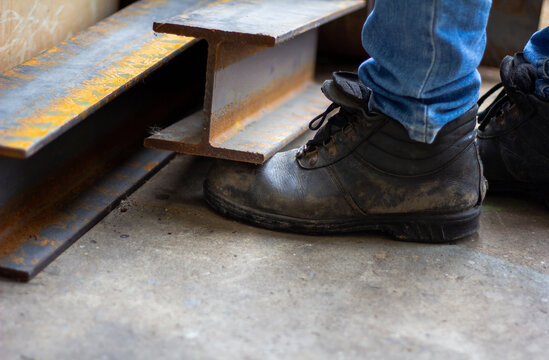In the realm of personal protective equipment (PPE), safety shoes are a frontline defense against workplace hazards, particularly when it comes to protecting the feet from impact and compression injuries. Among the myriad options available, two types of safety toe caps stand out: steel toe and composite toe. In this comprehensive comparison, we'll explore the features, benefits, and considerations of each to help you make an informed decision when selecting the right PPE safety shoes for your needs.
Steel Toe Safety Shoes: The Classic Choice
Steel toe safety shoes have long been the go-to option for workers across various industries, thanks to their durability and proven track record in protecting against impact and compression injuries. Here's a closer look at the key features of steel toe safety shoes:
Strength and Durability: As the name suggests, steel toe safety shoes feature a protective toe cap made from hardened steel. This material provides exceptional strength and durability, capable of withstanding heavy impacts and crushing forces.
Maximum Protection: Steel toe caps offer unparalleled protection against falling objects, heavy machinery, and other workplace hazards. They meet stringent safety standards set by organizations such as ANSI and ASTM, ensuring reliable protection in hazardous environments.
Heat Resistance: Steel toe caps also exhibit excellent heat resistance, making them suitable for environments where workers may encounter hot surfaces or molten materials. However, it's essential to note that steel is a good conductor of heat, so additional insulation may be required in extreme conditions.
Cost-Effective: Despite their robust construction, steel toe safety shoes are often more affordable than their composite counterparts, making them a cost-effective choice for budget-conscious buyers.
While steel toe safety shoes offer unmatched protection and durability, they do have some drawbacks to consider. Steel toe caps can conduct electricity, posing a risk in electrical hazard environments. Additionally, steel toe shoes are heavier than composite alternatives, which may lead to fatigue during long hours of wear.

Composite Toe Safety Shoes: Lightweight Protection
In recent years, composite toe safety shoes have gained popularity as a lighter, more versatile alternative to steel toe shoes. Constructed from non-metal materials such as fiberglass, Kevlar, or carbon fiber, composite toe caps offer several advantages:
Lightweight Design: Composite toe safety shoes are significantly lighter than their steel toe counterparts, making them more comfortable for extended wear. This reduced weight minimizes fatigue and allows for greater mobility without sacrificing protection.
Non-Conductive: Unlike steel toe caps, composite materials are non-conductive, making composite toe safety shoes an ideal choice for environments with electrical hazards. They provide an additional layer of insulation to protect against electric shocks.
Airport-Friendly: Because composite materials are non-metallic, composite toe safety shoes are not detected by metal detectors, making them ideal for workers who frequently pass through security checkpoints, such as airport employees.
Temperature Insensitivity: Composite materials do not conduct heat or cold as readily as steel, offering better insulation against extreme temperatures. This feature ensures greater comfort for workers in both hot and cold environments.
While composite toe safety shoes offer many benefits, they may not provide the same level of impact resistance as steel toe caps. Additionally, some composite materials may be susceptible to wear and tear over time, requiring replacement sooner than steel toe shoes.
Choosing the Right Option
When comparing steel toe vs. composite toe safety shoes, it's essential to consider the specific requirements of your workplace and the tasks you perform. If you need maximum protection against heavy impacts and crushing forces, steel toe safety shoes are the traditional choice. However, if lightweight comfort and non-conductive properties are more critical to your work environment, composite toe safety shoes may be the better option.
Ultimately, both safety shoes have their strengths and limitations, and the best choice depends on your individual needs and preferences. By understanding the features and considerations of each type, you can make an informed decision to ensure the safety and well-being of your feet in the workplace.
Copyright © Hebei Sinotools Industrial Co.,Ltd. All Rights Reserved | Powered by  Sitemap
Sitemap